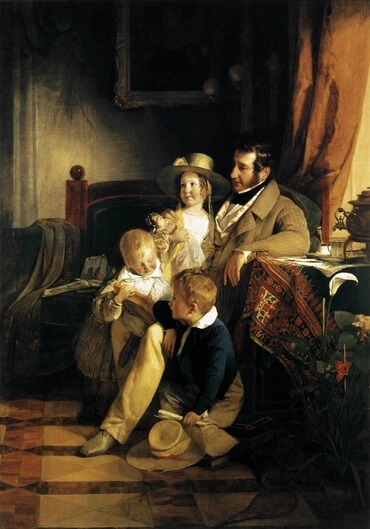Father

Father in the Word means what is most interior, and in those things that are following the Lord's order, it means what is good. In the highest sense Father means the Lord Himself, the creator. In the generation of natural children it is the father who provides the soul or the most interior receptacle of life, and an internal heredity, and the mother who provides all of the substance that the soul uses to form its body, plus an external heredity. In this process the soul comes from the Lord through the father, and not from the father, since all life is from the Lord. The wise person calls the Lord his father and the church his mother because his interior loves come from the Lord, but are given form and actuality through the truths taught by the church. Those things thus brought forth are a person's spiritual "children". In the New Testament, when speaking of Jesus and the Father, what is meant is the outward manifestation with the divine itself as the soul inside. Because Jesus was born from a natural mother, He had a natural body and a natural Jewish heredity. Throughout his life as He was tempted by the hells, He slowly put off all he had from His mother and replaced it with what He had from Himself inside, the Father. In doing this he made himself one with the Father that was His inmost so He could truly say, "I and my Father are one".
Apocalypse Revealed # 601
601. Telling those dwelling upon the earth to make an image of the beast that was injured by the sword and lived. This symbolically means that the clergy induce people in the church to accept as doctrine that faith is the only means of salvation, because no one can do good of himself without its being merit-seeking, and because no one can fulfill the law and in that way be saved.
Those dwelling upon the earth mean people in the Protestant Reformed Church, as in no. 600 above. The image symbolizes the doctrine of that church, as explained below. And the image of the beast that was injured by the sword and lived symbolizes this tenet of the doctrine, that faith is the only means of salvation, because no one can do good of himself without its being merit-seeking, and because no one can fulfill the law and in that way be saved (see nos. 576, 577ff. above).
[2] Every church appears to the Lord as a person. If it is governed by truths from the Word, it appears as an attractive person. But if it is caught up in truths falsified, it appears as a hideous person. The church appears as it does in keeping with its doctrine and in keeping with its life in accordance with that doctrine. It follows from this that a church's doctrine presents an image of the church.
This can also be seen from the fact that every person embodies his own goodness and truth or his own evil and falsity. It is this and nothing else that makes a person human. Consequently it is doctrine and a life in accordance with it which produces the image of a person in the church - the image of an attractive person if the doctrine and his life in accordance with it conform with the Word's genuine truths, but the image of a hideous person if they accord with the Word's truths falsified.
[3] In the spiritual world, moreover, a person appears as a kind of animal, but it is his affection that so appears at a distance. People impelled by truths and goods from the Lord look like lambs and doves, while those caught up in falsified truths and adulterated goods look like owls and bats. People possessing a faith divorced from charity look like dragons and goats. Those caught up in falsities springing from evil look like basilisks 1 and crocodiles. And those who are of this character and yet have affirmed the teachings of the church look like fiery flying serpents.
It can be seen from this that the church's doctrine and a life in accordance with it are meant by the image of the beast which the people made for those dwelling upon the earth.
[4] But what eventually became of those who worshiped the image of the beast may be seen in Revelation 14:9-11; 19:20, cf. 20:4.
Images have similar symbolic meanings in the spiritual sense in Exodus 20:4-5, Leviticus 26:1, Deuteronomy 4:16-18, Isaiah 2:16, Ezekiel 7:20; 16:17; 23:14-16.
Among the ancients, idols and carved images were symbols of their religious faith. Consequently they symbolize doctrinal falsities and evils (no. 459).
Poznámky pod čarou:
1. Legendary serpents or dragons, whose breath and glance were said to be lethal. Formerly identified in English translations of the Latin Vulgate with the cockatrice, and retained as such in the King James Bible.






